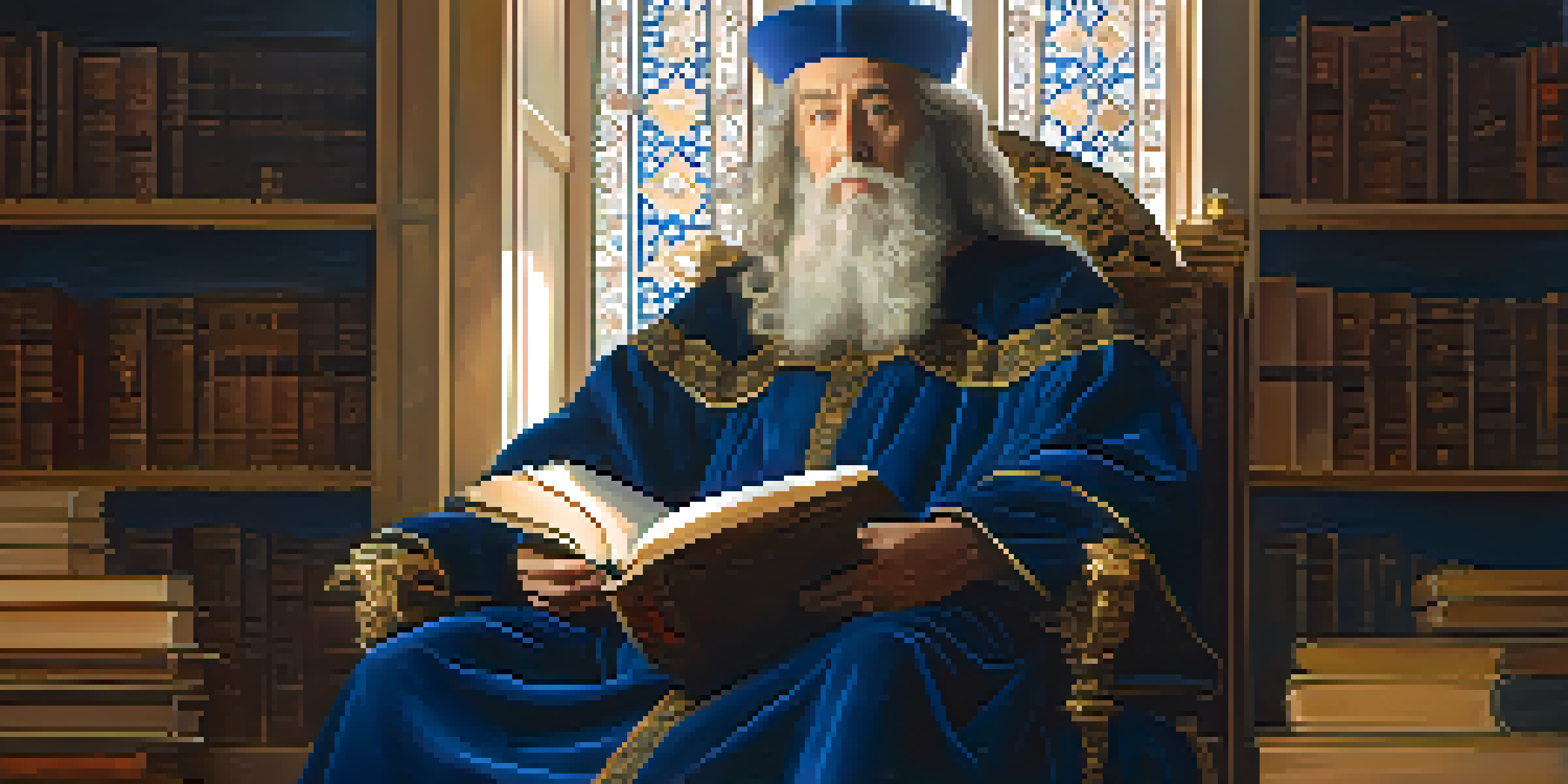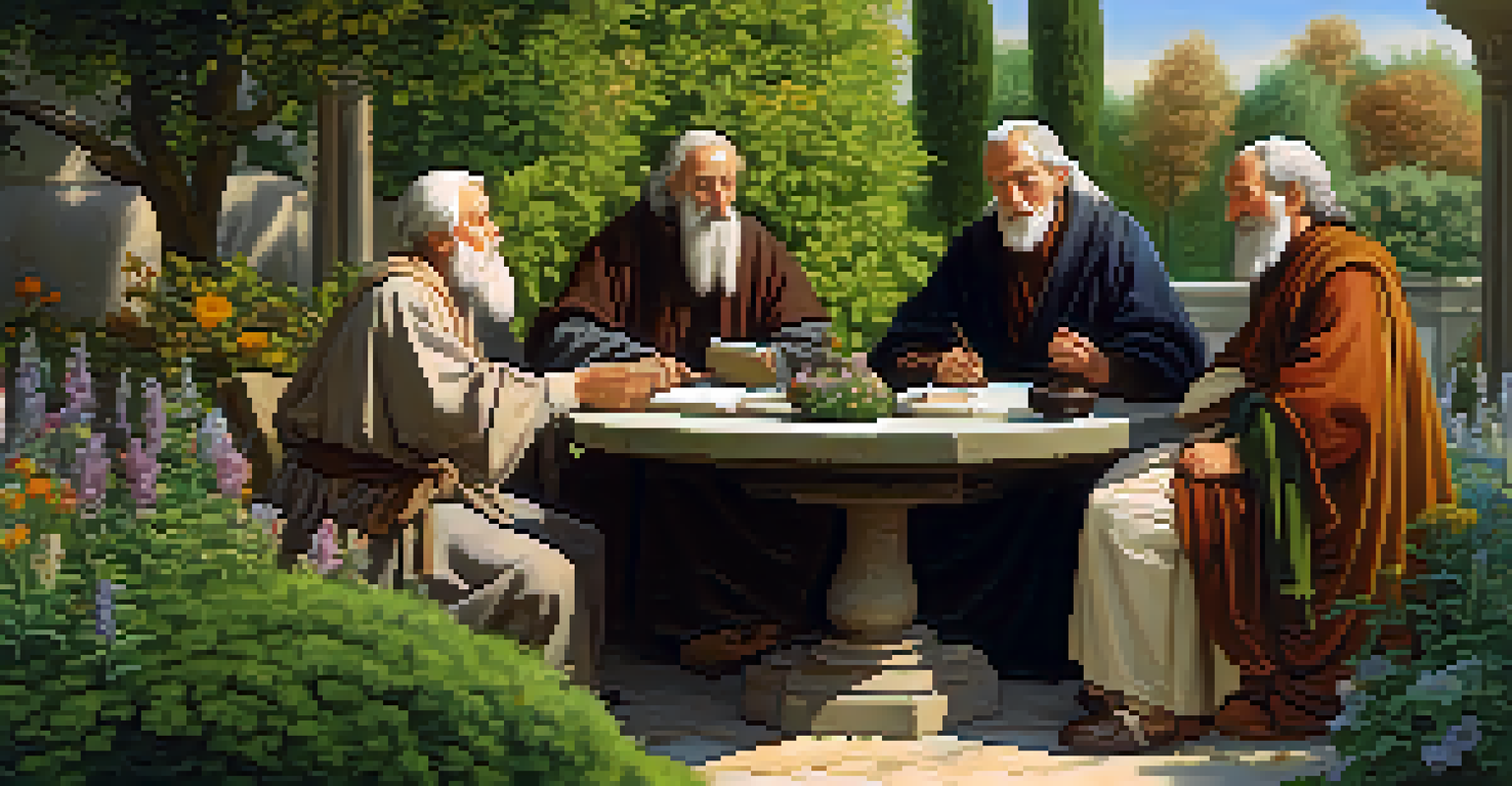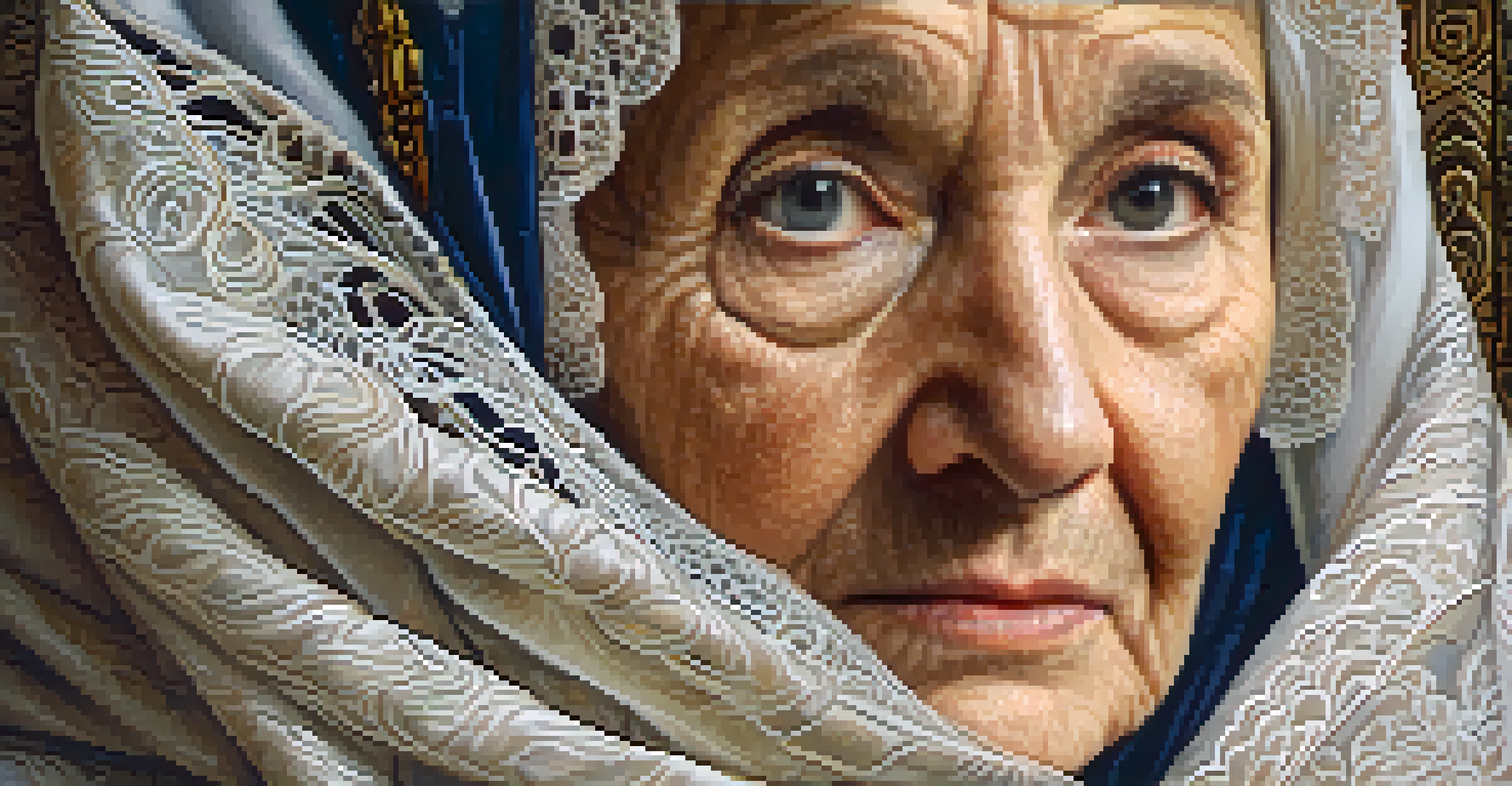The Portrayal of Elders in Renaissance Artworks

Understanding the Context of Renaissance Art
The Renaissance, spanning the 14th to the 17th century, marked a significant cultural revival in Europe. This period emphasized humanism, focusing on the value of individual experience and wisdom, particularly seen in the portrayal of elders. Artists began to break away from the rigid religious themes of the Middle Ages, allowing for a more diverse representation of age and character.
The great aim of education is not knowledge but action.
In this context, elders became symbols of wisdom and experience, reflecting society's reverence for age. They were often depicted in artworks as figures of authority, drawing on their life experiences to embody moral lessons. This shift in perspective not only changed how elders were viewed but also influenced the content and style of Renaissance art.
As a result, many artworks from this era showcase elders in a variety of roles, from wise leaders to contemplative philosophers, illustrating the multifaceted nature of age. The portrayal of elders served to remind viewers of the importance of wisdom and the life lessons accumulated over time.
Elders in Religious Art: A Symbol of Wisdom
Religious artworks from the Renaissance often featured elders as central figures, symbolizing divine wisdom and guidance. In many instances, these portrayals were not merely aesthetic but served a didactic purpose aimed at imparting moral lessons. For example, the depiction of elders in biblical narratives often highlighted their roles as prophets or sages, underscoring the significance of their wisdom in faith.

Artists like Raphael and Michelangelo frequently included elderly figures in their compositions, illustrating their importance in the religious narrative. In 'The School of Athens,' Raphael features aged philosophers like Plato and Aristotle, who embody the pursuit of knowledge and truth. Their presence elevates the conversation about wisdom, bridging the gap between the earthly and the divine.
Elders Represent Wisdom in Art
Renaissance artists portrayed elders as symbols of wisdom and experience, reflecting society's reverence for age.
These religious representations not only honored the elders but also encouraged viewers to aspire to the virtues associated with age. By depicting elders in this light, artists reinforced the idea that wisdom comes with experience, urging society to respect and learn from their elders.
Secular Depictions of Elders in Renaissance Art
Beyond religious contexts, Renaissance artists also explored secular themes, often portraying elders in everyday life. These depictions provided insight into the social dynamics of the time, showcasing the roles that older individuals played within families and communities. Artists like Titian and Rembrandt captured moments that reflected the dignity and complexity of aging.
Wisdom is not a product of schooling but of the lifelong attempt to acquire it.
For instance, in Titian's 'The Man with the Blue Sleeve,' the elderly figure is depicted with a sense of gravitas and importance, suggesting a narrative that extends beyond mere appearance. Such representations highlighted the value of elders in society, emphasizing their connections to tradition and familial bonds.
These secular portrayals allowed viewers to see elders as relatable individuals with rich life experiences, rather than just symbols of wisdom. By humanizing these figures, artists fostered a deeper understanding and appreciation of aging within the broader cultural context.
The Role of Portraiture in Representing Elders
Portraiture became a significant means of representing elders during the Renaissance, allowing for personalized depictions that captured the uniqueness of each individual. This art form emphasized the individuality and life story of the elderly, showcasing their character, emotions, and experiences. Artists like Jan van Eyck and Hans Holbein the Younger excelled in creating lifelike representations that resonated with viewers.
Through careful attention to detail, these portraits often conveyed the social status and accomplishments of the elderly subjects. An elder's attire, facial expressions, and even the objects surrounding them in the artwork contributed to a narrative that revealed their life journey. This focus on individuality helped to elevate the status of elders in society.
Cultural Influence on Elder Depictions
The rise of humanism and the rediscovery of classical ideals shaped the portrayal of elders as valuable members of society.
Moreover, portraiture allowed for a dialogue between the viewer and the subject, inviting reflection on the passage of time and the wisdom that comes with age. It served not just as a representation but as a celebration of the life and legacy of the elder, fostering a deeper connection between generations.
Cultural Influences on the Portrayal of Elders
Renaissance art was heavily influenced by the cultural and philosophical movements of the time, shaping how elders were portrayed. The rise of humanism, for instance, brought a renewed focus on the human condition, encouraging artists to explore themes of aging and wisdom more openly. This cultural shift allowed for a broader acceptance of depicting elders as valuable members of society.
Additionally, the rediscovery of classical texts and ideals from ancient Greece and Rome inspired Renaissance artists to reflect on the virtues of age. Elders were often seen as embodiments of knowledge and philosophical insight, leading to their inclusion in various artistic themes. The blending of these cultural influences resulted in a richer portrayal of elders, who were celebrated for their contributions to society.
As artists navigated these cultural currents, they began to challenge stereotypes associated with aging, instead presenting elders as dynamic and integral figures in the tapestry of life. This cultural appreciation for age fostered a more nuanced understanding of the elderly, paving the way for future artistic representations.
Famous Elderly Figures in Renaissance Art
Throughout the Renaissance, several iconic elderly figures emerged in art, leaving a lasting impact on the portrayal of age. One notable example is Socrates, often depicted in various artworks as a wise and contemplative elder. His philosophical legacy transcended time, making him a symbol of wisdom that resonated with Renaissance thinkers and artists alike.
Similarly, biblical figures like Noah and Abraham were frequently represented as elderly men of faith, embodying virtues such as patience, leadership, and perseverance. These portrayals not only highlighted their wisdom but also served to inspire viewers through their narratives of resilience and hope.
Legacy of Elder Representation
The representation of elders in Renaissance art has influenced contemporary views on aging, promoting respect and understanding.
These famous elderly figures became archetypes within Renaissance art, representing the ideals of wisdom and moral authority. Their enduring presence in artworks reflects the era's admiration for age and the lessons that can be learned from those who have lived rich and varied lives.
The Legacy of Elder Representation in Art
The portrayal of elders in Renaissance art has left a profound legacy that continues to influence contemporary art and culture. By humanizing elderly figures and celebrating their wisdom, these artworks have contributed to a more respectful and nuanced view of aging in society. The Renaissance set a precedent for recognizing the value of elders, which still resonates today.
Moreover, the artistic techniques developed during this period, such as realistic portraiture and expressive characterization, have been utilized in modern representations of age. This legacy encourages contemporary artists to explore themes of aging and wisdom, fostering a dialogue that challenges ageism and promotes understanding.

Ultimately, the representation of elders in Renaissance art serves as a reminder of the importance of honoring and learning from those who have come before us. By reflecting on this legacy, we can continue to appreciate the richness of life experiences that elders bring to our communities.